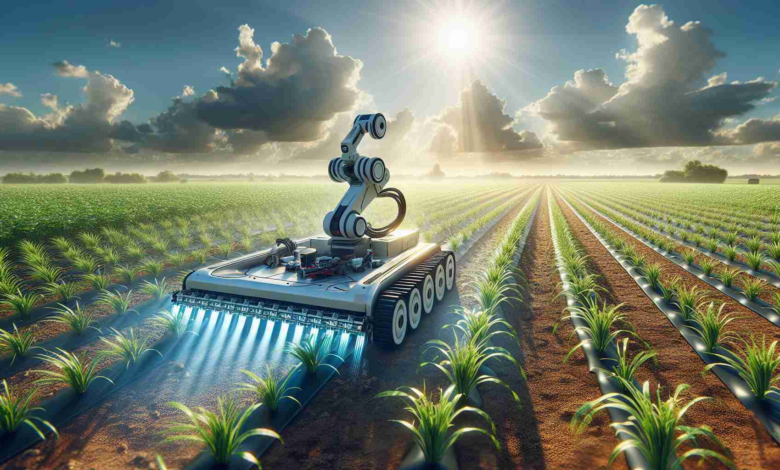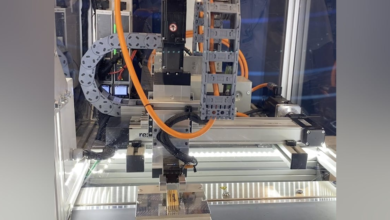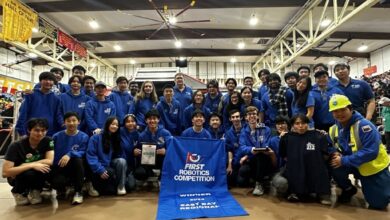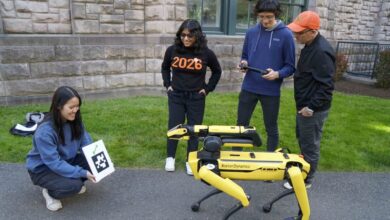AI-Powered Robotics Take on Agriculture’s Age-Old Challenge

Artificial intelligence is making its way into agriculture, with tech giant Nvidia leading investments in a robotic venture that could transform how farming is done. Carbon Robotics, an agricultural company, has introduced the LaserWeeder, a weed-killing machine backed by Nvidia’s high-tech AI chips.
The LaserWeeder operates with precision, utilizing a system of lasers capable of eradicating up to 5,000 weeds per minute. Spanning over 6 meters wide, this behemoth with three rows of ten lasers each, attaches to a tractor and hones in on unwanted plants with pinpoint accuracy.
Combating weeds has been a daunting task for millennia, particularly in North American winter wheat fields, where they inflict annual damages of around $2.2 billion. In Europe, the reliance on synthetic herbicides, with an estimated annual use of 130 million tons, poses substantial health and environmental risks.
Enter the age of automation and artificial intelligence in farming. The LaserWeeder’s graphics processing units (GPUs) are equipped with image data for 25 million labeled plants and over 30,000 models of crops and weeds. As a result, the machine can discern between crops and weeds and exclusionary exterminate the latter.
Aside from its efficiency, the LaserWeeder also records real-time data on plant health, transmitting it to the cloud, thereby providing farmers with insights they can access anytime, anywhere.
Despite its steep price tag of $1 million per unit, the demand for LaserWeeder is sky-high, with its power to do the work equivalent to 70 humans. Farmers see the investment as worthwhile, given the potential to break even within 2 to 3 years on areas larger than 800,000 square meters.
In 2023, LaserWeeder saw a remarkable 300% annual revenue growth, spreading across the US and Canada. Its innovative approach earned it a spot on Fast Company’s Most Innovative Companies list in 2021 and the “Best AI Application in Agriculture” award in the same year.
Backed by venture capital, Carbon Robotics’ evolution in weed control aligns with Nvidia’s NVentures’ vision that AI and robotics pose untapped potential to address myriad challenges in agriculture, signaling a growing interest in AI solutions for greener farming practices.
Facts Relevant to Topic:
Artificial intelligence (AI) impacts various facets of agriculture, beyond weed control. Advancements in AI and machine learning enable predictive analytics for crop yield, soil health monitoring, precision farming techniques, and automated harvesting, among other applications. Venture capital investment in AI-driven agricultural technologies reflects a broader embrace of tech-driven solutions in agriculture.
Some important questions and answers related to the use of AI-powered robotics in agriculture:
Q1: What are the main challenges associated with AI in agriculture?
A1: Key challenges include high initial costs, technology adoption barriers among farmers, the need for robust datasets to train AI models, and concerns over job displacement due to automation. Additionally, the machinery must operate in diverse and unstructured environments, which poses technical challenges.
Q2: What controversies are associated with robotics in agriculture?
A2: Controversies include potential job loss as robots replace manual labor, ethical considerations in food production, and the potential for increased inequality if only large-scale farms can afford such technologies.
Advantages and Disadvantages:
The advantages of AI-powered weed control include reduced reliance on chemical herbicides, increased efficiency in weed removal, labor cost savings, and environmental benefits from reduced chemical usage.
Advantages:
– Reduces the need for chemical herbicides, benefiting the environment and human health.
– Increases efficiency, as machines like the LaserWeeder can operate much faster than human labor.
– Saves on labor costs and tackles the issue of labor shortages in agriculture.
– Provides precision agriculture, potentially leading to higher crop yields and optimized farming practices.
Disadvantages:
– High initial costs could be a barrier to adoption for smaller farms, possibly widening the gap between large and small-scale operations.
– Risk of job displacement for farmworkers who traditionally handled weed control.
– Requires technical expertise to maintain and operate the high-tech systems.
– AI models require continuous data input and learning to maintain accuracy.
Related links to reputable sources on the topic would be:
– NVIDIA, as they are the AI chip provider for the LaserWeeder.
– Carbon Robotics, which is the company behind the AI-powered LaserWeeder machine.



